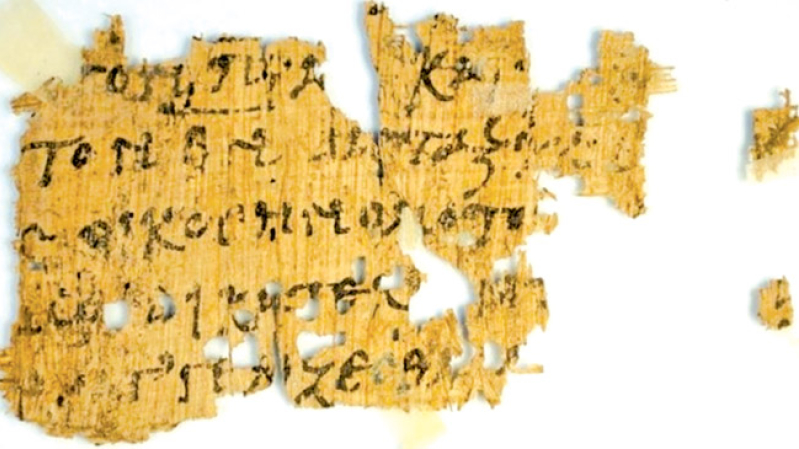
Ebay is chock-full of unique and strange objects, but the most surprising find to date may be a rare New Testament papyrus fragment dating to around 300 AD.
According to a report in The New York Times, last January, Christianity scholar Geoffrey Smith found the listing for an ancient Greek papyrus fragment of the Gospel of John - with an opening bid of only $99.
"I thought, this can't be allowed to sell on eBay," he told the news outlet. "It will just disappear into a private collection."
Smith quickly reached out to the seller and convinced him to suspend the auction so that he could study it. What he found was surprising: a few lines in Greek from the Gospel of John (possibly John 1: 50-51) and unidentified Christian writing on the other side. The scholar dated it around AD 250 to AD 350, at the time Christians preferred to record texts on codexes, a forerunner to books.
"If Dr. Smith's analysis is correct, it is the only known Greek New Testament papyrus from an unused scroll rather than a codex, the emerging book technology that early Christians, in sharp contrast to their Jewish and pagan contemporaries, preferred for their texts," reads the Times report.
On Saturday, Smith presented his findings at a biblical literature conference in Atlanta, and an abstract of the talk said he planned to "entertain the possibility that [the secondary text] belongs to an otherwise unknown Christian apocryphal text."
The original eBay listing said the credit-card sized papyrus had belonged to Harold R. Willoughby, a professor of early Christianity at the University of Chicago. When he died in 1962, part of his private collection fell into the hands of a relative. The papyrus "fell out of a stack of letters" when the relative opened a suitcase that had been stashed in an attic since 1990.
A collection inventory compiled after Mr. Willoughby's death confirmed it was part of his collection in 1962.
Greek New Testament papyri are among the oldest and rarest traces of Christian scripture, according to the Times, and only about 130 have been recognized by the Institute for New Testament Textual Research in Münster, Germany, which registers New Testament manuscripts of all types.
Another intriguing aspect of the manuscript is that both the John text and the unidentified Christian text appear to be in the same handwriting, which is a very unusual feature for any of the reused scrolls that survive from antiquity, AnneMarie Luijendijk, a professor of religion at Princeton University told the Times.
"If it was in a personal library, and then the same scribe turned it around to write the other text, what does that mean?" Dr. Luijendijk said. "It's really puzzling."
Smith told reporters he isn't sure of what will happen to the papyrus, but expressed consternation regarding the online marketplace of priceless artifacts.
"The fact that this one came to light on the Internet speaks to the reality for all of us who deal with manuscripts and antiquities," he said. "We're all trying to come to terms with these things we study, our prized scholarly possessions, are now coming up for sale online."







